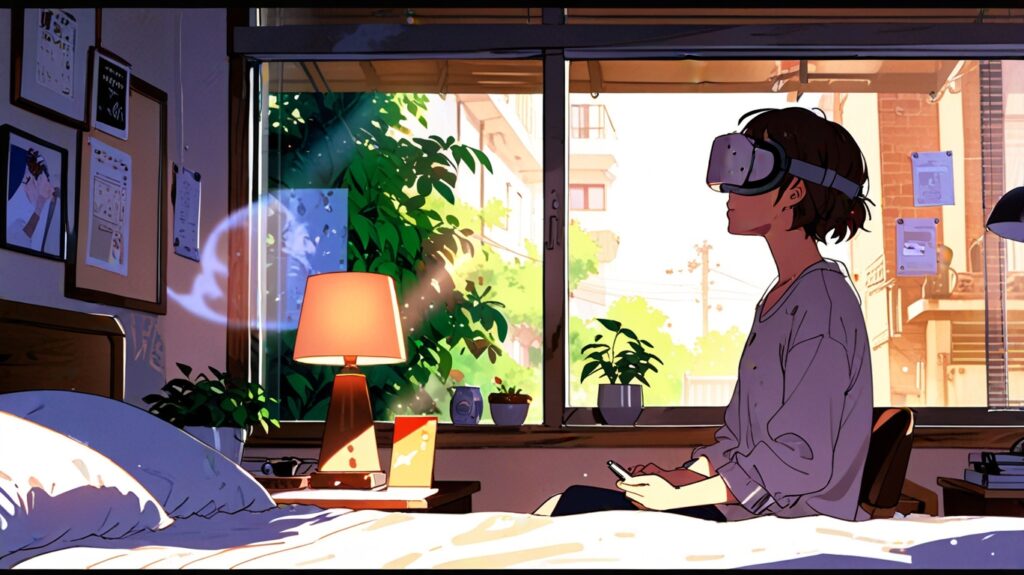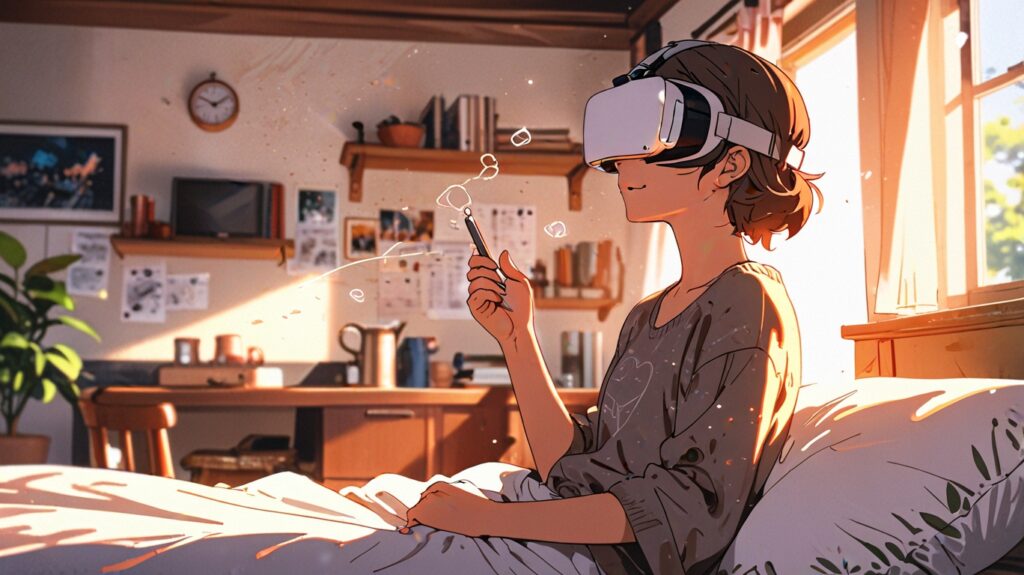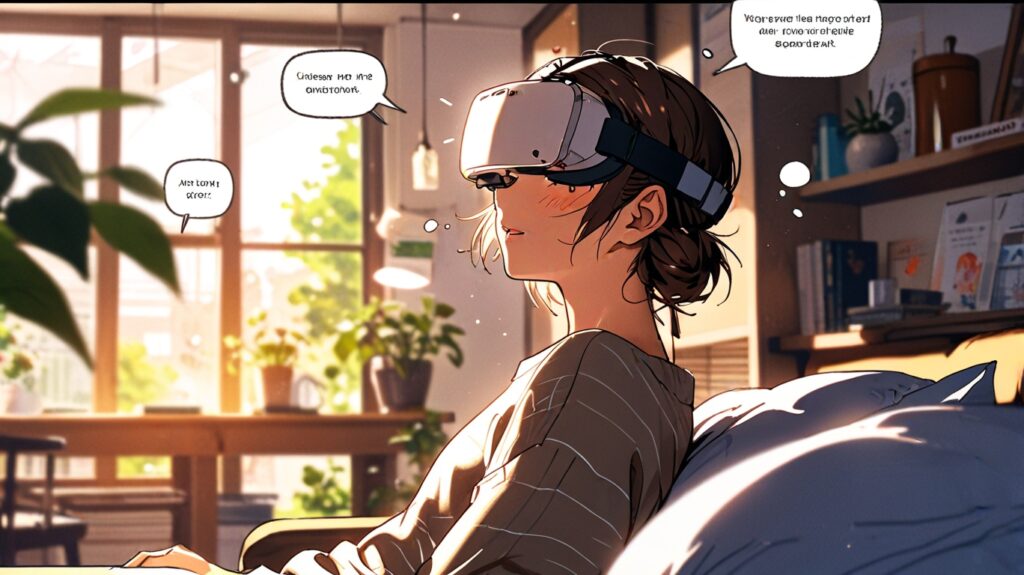Can Virtual Reality Treat Social Anxiety?
Can Virtual Reality Treat Social Anxiety?
Okay, so let’s get into something that sounds straight out of a Black Mirror episode but is actually very real: can virtual reality help people with social anxiety?
Now if you’re someone who’s ever had your heart race before walking into a room full of people, or felt like you’d rather vanish than speak up in class or during a meeting — I get you. Seriously. Social anxiety isn’t just “being shy.” It’s like your brain hits the emergency alarm just because someone made eye contact for too long or asked, “So, what do you do?”
It’s exhausting. And what’s worse? The more you avoid these situations, the harder they get. That’s where the idea of VR therapy starts to get interesting — and weirdly hopeful.
So let’s talk. No big scary words, no science-speak. Just me explaining this the way I’d explain it to a friend — probably while pacing the room or rambling a bit too much because social things stress me out too.
Alright, So What Even Is VR Therapy?
Let’s say you put on one of those VR headsets — you know, the ones that usually transport you to a zombie apocalypse or a fake beach resort. But instead of gaming, you’re suddenly in a virtual coffee shop, and your goal? Order a latte.
That’s it. That’s therapy. But here’s the magic — for someone with social anxiety, that tiny act can be huge.
In real life, walking up to a counter and saying your order might set off a full-blown internal meltdown. But in VR? You can practice. You can mess up. You can start over. And the worst thing that happens is… your virtual barista gives you a weird look. Not even a real one.
You’re exposing yourself to the scary stuff, but without the real-life pressure. That’s the core of how VR helps — it lets your brain rehearse being brave in a way that feels real, but isn’t overwhelming.




So… Does It Actually Work?
Yep. It really does.
There’ve been actual studies — not just one, but many — that show VR therapy helps reduce anxiety, especially social anxiety. It’s called Virtual Reality Exposure Therapy (VRET) and it’s kind of like traditional exposure therapy (where you slowly face the things that scare you), but inside a virtual world.
Some programs are designed for public speaking. Others for social situations, like dating or meeting strangers. And yeah, they feel awkward — which is kind of the point. The goal isn’t to make you feel amazing instantly. It’s to show your brain that, “Hey, this feels uncomfortable… but I survived. I didn’t die. Nothing exploded. Maybe I can do this again.”
That builds confidence, slowly and quietly, until one day you do the real thing — and it’s not as terrifying as it used to be.
Who’s This For?
Honestly? Anyone who struggles with social stuff.
It’s not just for people with full-blown social anxiety disorder. If you hate networking events, freeze up when someone compliments your outfit, or get weirdly nervous when the phone rings — this can help.
Also, for people who want to try therapy but feel too nervous to talk to someone face-to-face, VR therapy can be a gentle first step. Some apps even let you do it at home. No one watching. No judgment.
Just you, your headset, and a virtual grocery store where you finally say “excuse me” to someone blocking the cereal aisle. (Which is secretly one of the most emotionally difficult things in adult life, honestly.)
Why It Feels Like a Cheat Code
The best part? VR therapy feels safer than real-life exposure. You’re in control. You can pause. You can reset. You can practice one tiny social interaction a hundred times if that’s what it takes.
And slowly, those moments that used to trigger a full-body panic start to feel… manageable. Familiar. Maybe even okay.
Plus — and I say this as someone who doesn’t love crowds — when you realize you can face a scary situation and come out the other side intact, it’s empowering in a way that sticks.
But It’s Not Magic
Let me be clear: VR isn’t some instant fix. It’s not going to turn you into a social butterfly overnight. And it definitely doesn’t replace therapy with an actual person, especially if you’ve got deeper stuff going on.
Also, the tech itself can be pricey, and not everyone has access to it yet. But it’s getting better — more apps, more therapists using it, and more affordable devices every year.
So no, it’s not perfect. But for a lot of people, it’s a gentle, helpful push in the right direction. And sometimes, that’s all you need to start changing things.
Final Thought
So, can virtual reality help with social anxiety?
Yeah. It really can. Maybe not for everyone, and maybe not by itself — but it’s a new, surprisingly kind tool in the mental health toolbox. And for people who’ve spent years avoiding eye contact or dodging conversations, that’s a big deal.
It’s one more way to take back your confidence, at your own pace, in your own space, with a headset on your face and no one watching.
And hey — if a few awkward virtual conversations help you feel braver in real ones? That’s a win.
Related Articles from EdgyThoughts.com:
Why Emotional Intelligence Is Finally Being Taught in Schools
https://edgythoughts.com/are-schools-teaching-emotional-intelligence-now
Is VR the Future of Classroom Learning?
https://edgythoughts.com/is-vr-the-future-of-classroom-learning
External Resource:
Explore more on how virtual reality is used in therapy:
Virtual reality therapy
How Does Social Media Impact Teen Mental Health 2025
https://edgythoughts.com/how-does-social-media-impact-teen-mental-health-2025/
How does the immune system distinguish self from non-self?
https://edgythoughts.com/how-does-the-immune-system-distinguish-self-from-non-self/





